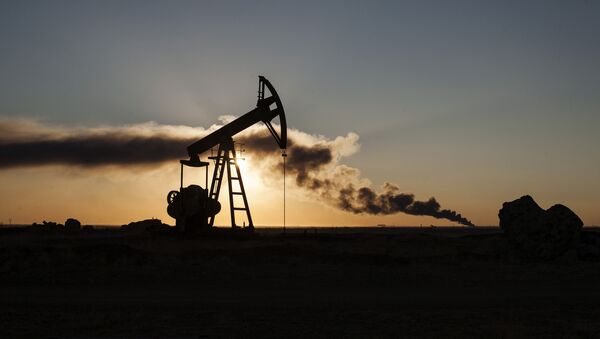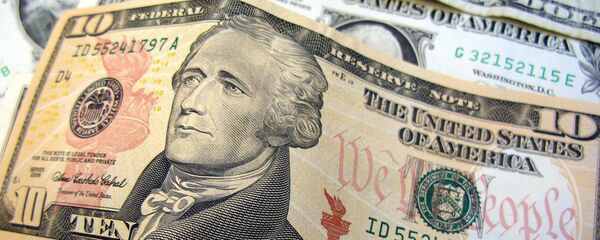This time around, however, the oil glut remains intact, while US-based shale oil producers have proven resilient to lower revenues, and the recent gains in oil prices are stemming from the dollar's weakness and assumptions that major oil producing nations could reach an agreement to curb their crude output. Yet, should the US Federal Reserve hint at the next round of monetary tightening amid an acceleration of the economy, the dollar is poised to go up again, providing a potential turning point in the current oil rally.
Oil prices nearly hit $50/bbl on Friday, having rolled off their 2016 high; throughout April, the Brent benchmark posted its best one-month rally in seven years. Brent futures contracts ended the last week of April at $48.13/bbl, having rallied 21.5% in April, the commodity's best result since May 2009.
Uncertainty remains about how far #oil production will drop, when it may start to rise: https://t.co/U9oUOCEgui pic.twitter.com/wQXEJwcVDi
— World Bank (@WorldBank) 28 April 2016
The rebound in oil prices from below $30/bbl in January is partially based on easing concerns of an oil market oversupply as US inventories shrunk in Q1 and a possible deal to curb crude output is speculated to be in the making between Saudi Arabia, Russia and other major producers. Another factor is, amid nearly-stalling economic growth in the US, which added a dismal 0.5% in Q1 despite favorable winter conditions, the dollar has been sliding steadily throughout the year thus far, its value having dropped over 5% against its major peers. Oil prices, denominated in US dollars, therefore, rose automatically.
The current oil rally, however, is largely speculative. Aside from the weakening dollar and hopes for a production curb deal, market fundamentals have not changed significantly since January, when oil prices were at their lowest. OPEC crude output hit its historic highest in April, at 10.5 mln bpd, while international oil inventories are still rather high, with no indication of a fuel shortage in any of the advanced economies.
"The issue is that we haven't seen price rallies… correlate with fundamentals," Hamza Khan of the financial services company ING Group said. "The fundamentals — high stocks, high production — haven't changed."
A handful of international financial enterprises, including Commerzbank AG, BNP Paribas SA, and UBS Group AG, warned the oil prices might collapse as soon as in May, repeating last year's scenario of a massive plunge in prices after a solid rebound.
Oil price forecast: "Cloudy with a chance of freefalls," says @Barclays
— Georgi Kantchev (@georgikantchev) 25 April 2016
"There are dangerous parallels to 2015," Eugen Weinberg of Frankfurt-based Commerzbank said. "The market already appears overheated and a correction is overdue."
In 2015, Brent gained roughly 45% in the first half of the year, rebounding to $68/bbl before sinking significantly. The gains in prices reversed at the point where US oil output hit its highest, at 9.61 mln bpd. The current situation is even more volatile — initial gains in prices have been about 70%, while OPEC production is at its historic highs of over 10 mln bpd, whilst US crude output is at 8.9 mln bpd.
Besides, the US could potentially boost crude output yet again — a recovery in prices would embolden shale drillers.
"The recent rally in oil prices may be self-defeating as it throws a life-line to US shale producers," Harry Tchilinguirian of the London branch of BNP Paribas said.
Neither would shale drillers die off easily. Despite rife disinvestment in the energy sector, oil prices have not been low enough to completely wipe out fracking companies in North America. The oil supply is above demand worldwide, and there are tankers full of oil floating in the sea waiting for a buyer.
Another factor playing against any assumptions that oil prices would stand firm is the declining discount in the spot US oil market, making stockpiling oil in North America for later delivery less profitable. Oil companies, therefor. would push to sell immediately in order to save on the expense of storage.




